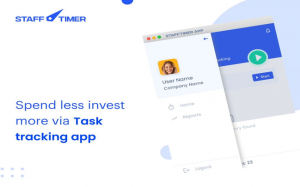The Evolution of Time Tracking
The concept of time goes back several thousand years but Time Tracking is a fairly recent idea. While Europe was still in the shackles of aristocracy, there was no concept of work hours.
The lords and earls spent a large part of their day in Court sycophanting the king, the peasants and serfs worked from dawn till dusk in the fields to pay off the rent, feed the children and save up food for winters.
But with the onset of industrial revolution, all started to change. Aristocracy started crumbling as more and more peasants headed to urban centres in order to find employment in factories. This eventually pushed the government to pass legislations for limiting the number of working hours and define minimum wages for an employee.
All these efforts to ensure betterment of the common man, amidst of labor union activism, gave birth to the concept of Time Tracking.
Time Tracking initially was done for the purpose of calculation of wages of the workers, as they were paid by the hour. The first tools used for the purpose were crude, time consuming and often inaccurate.
As a factory worker left the premises after his work day, he would take out his time card and get it punched by the time clock. The supervisors would later collect the cards and manually enter the time in a payment ledger to calculate the time spent while working. This process was mundane, long and prone to human error.
For many decades, time clocks with some innovations here and there were used but they didn’t really solve the problem.
Meanwhile, the classic tool for record keeping, paper, was also used a lot. This system also heavily relied on the efficiency of the people involved in the process.
![]()
In 1990s, the electronic time recorder made its way into the industry. With the help of magnetic stripe cards, the machine automatically logged the time that an employee spent while working.
With the advent of computers and their extensive usage in almost every industry, desktop based applications that automatically tracked time started getting popularised.
This new tool for tracking time saved professionals from a lot of pains of inaccurate time logging practises but this system had its own problems. Since, the applications were desktop stationed they didn’t have the functionality of syncing the data to other devices.
Over the years, internet change the way we lived our lives. Many professionals now opt to work from home and reap the many benefits of telecommuting. Many others work in remote offices that are situated thousands of miles away.
Many more have made freelancing as a way of life. These shifting patterns of how we work opened up space for innovative time tracking tools. And web based Time Tracking Applications came into existence.
There is a plethora of web based Time Tracking Software out there. Each one of them offers many similar and some diverse features. The best ones, however, are those that ensure flawless time tracking that remains unaffected by human error. The more automated the system the better.
But there is a fine line between tracking time and invading privacy of an employee. And there are only a few reliable applications out there that do not track URLs or Keystroke activities.
These sophisticated tools have made working away from workplace easier and more reliable. The advantages of tracking time accurately not only benefits the employees but also help the employer is boosting up the productivity of their business.


